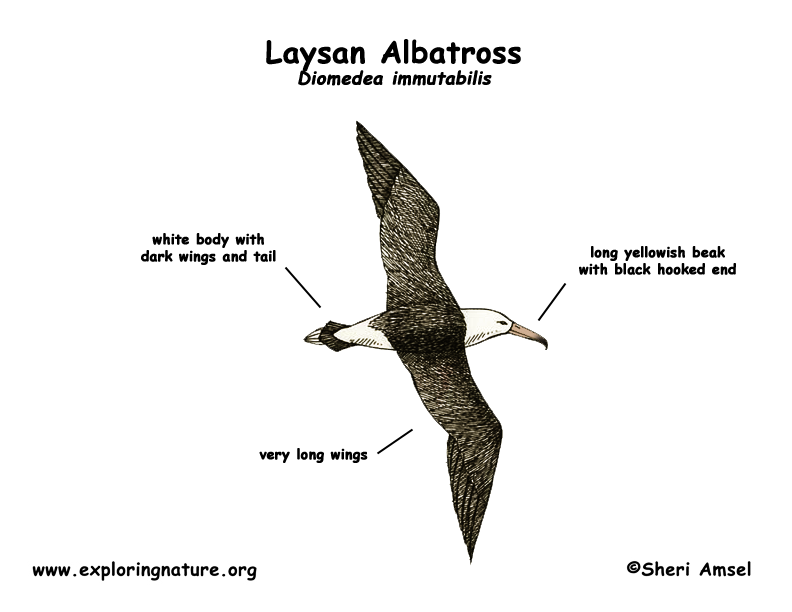

They are found mostly on the Hawaiian Islands and other Islands in the Pacific Ocean.
They live out on the open ocean and only come on land to breed on the sandy shores.
Though it is only 2 feet long, its wingspan is 6 feet wide. It is all white, except for a black tail and wings and pink legs. It has webbed feet. It has a long orange beak with a black hooked end.
Laysan Albatross do a mating dance to attract a mate from the big colony that gathers on the Islands to breed. Laysan Albatrosses mate for life.
They eat squid, fish, fish eggs and krill that they scoop out of the water at night.
The only time albatross come to land is to nest. They gather in big groups (colonies). Females lay one egg in a dent in the sand. Males and females share keeping the eggs warm (incubation).
Kingdom: Animalia
Phylum: Chordata
Subphylum: Vertebrata
Class: Aves
Order: Procellariiformes
Family: Diomedeidae
Genus: Phoebastria
Species: P. immutabilis
When you research information you must cite the reference. Citing for websites is different from citing from books, magazines and periodicals. The style of citing shown here is from the MLA Style Citations (Modern Language Association).
When citing a WEBSITE the general format is as follows.
Author Last Name, First Name(s). "Title: Subtitle of Part of Web Page, if appropriate." Title: Subtitle: Section of Page if appropriate. Sponsoring/Publishing Agency, If Given. Additional significant descriptive information. Date of Electronic Publication or other Date, such as Last Updated. Day Month Year of access < URL >.
Amsel, Sheri. "Albatross (Laysan)" Exploring Nature Educational Resource ©2005-2024. December 13, 2024
< http://www.exploringnature.org/db/view/Albatross-Laysan >

